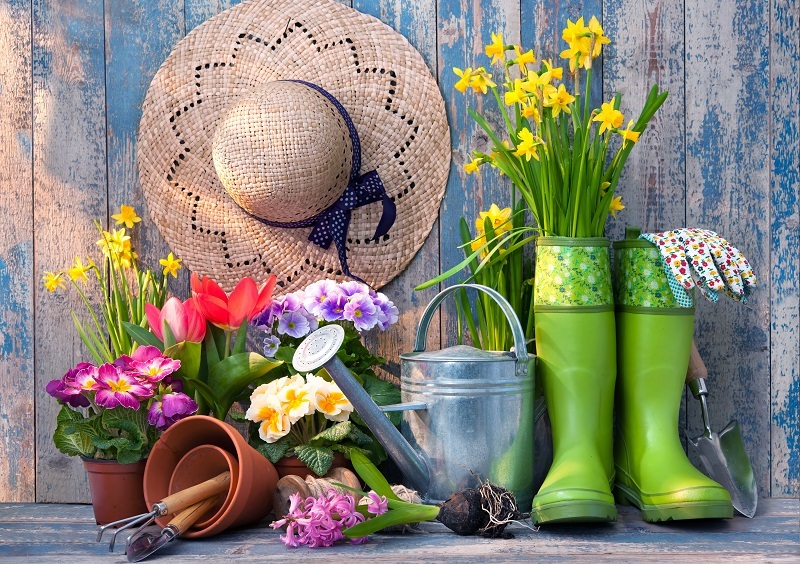7 Unknown Secrets About the Timeless Tulip
Posted on 02/07/2025
7 Unknown Secrets About the Timeless Tulip
The timeless tulip is a symbol of beauty, love, and resilience, capturing the hearts of gardeners and flower enthusiasts for centuries. While many are familiar with their stunning spring displays, there are lesser-known facts about tulips that will surprise even the most seasoned flower lovers. In this article, we'll delve into 7 unknown secrets about the tulip--secrets that add depth and intrigue to this universally cherished bloom.

Secret 1: The Tulip's Ancient Origins Trace Back to Central Asia
Did you know that the history of the tulip dates back thousands of years? Contrary to popular belief, tulips did not originate in the Netherlands. Instead, their roots (quite literally!) stretch back to the mountainous regions of Central Asia--an area encompassing modern-day Kazakhstan, Uzbekistan, and surrounding territories.
- Earliest records suggest that nomadic tribes cultivated tulips as early as the 10th century.
- The name "tulip" is believed to derive from the Persian word "delband," meaning turban, likely inspired by the flower's turban-like shape.
- Natural tulips still bloom wild across the Asian steppes, displaying a remarkable array of forms and colors that differ from the cultivated varieties we know today.
This little-known origin story of tulips highlights the flower's resilience and adaptability--traits that have helped make tulips the beloved garden icons they are today.
Secret 2: Tulip Mania--History's First Economic Bubble
One of the most fascinating chapters in the tulip's story is the episode known as Tulip Mania. While tulips symbolize elegance, they once embodied economic madness!
What Was Tulip Mania?
- During the Dutch Golden Age in the early 17th century, tulip bulbs became so highly prized that their prices soared astronomically.
- People from all walks of life speculated on tulip bulbs, tradingcontracts for exotic varieties, with some bulbs reportedly selling for more than the price of a house!
- Tulip Mania is widely recognized as the world's first recorded financial bubble--when the market crashed in 1637, fortunes were lost almost overnight.
Today, the tulip bulb bubble serves as a cautionary tale in economics and remains a testament to the flower's powerful cultural influence.
Secret 3: Unusual Uses--Tulips as Survival Food
While tulips are prized for their aesthetic appeal, few people know that tulip petals and bulbs have served as emergency food sources in times of crisis.
Tulip Bulbs in World War II
- During the Hunger Winter of 1944-45 in World War II, the Netherlands experienced severe food shortages.
- Starving civilians turned to tulip bulbs--normally poisonous and bitter--boiling and cooking them to stave off hunger.
- Though not recommended as a regular diet (due to alkaloids in the bulbs), tulip consumption during this period saved many lives.
This little-known chapter in the survival history of the tulip underscores both the flower's versatility and the tenacity of the human spirit.
Secret 4: The Infinite Palette--More Than 3,000 Tulip Varieties
The remarkable diversity of tulip flower varieties is a marvel in itself. While most people are familiar with classic red or yellow tulips, the reality is far richer.
- There are over 3,000 registered varieties of tulips, grouped into more than 15 distinct categories, including Triumph, Darwin Hybrid, Parrot, Lily-flowered, and more.
- Tulip colors span almost the entire spectrum, with the notable exception of true blue.
- Specialty breeders have introduced tulips with fringed, doubled, or even variegated petals.
This expansive genetic diversity has made the timeless tulip a favorite subject for gardeners, floral designers, and artists seeking to dazzle with nature's own palette.
Secret 5: Symbolism and Hidden Language of Tulips
The symbolism of tulips goes far beyond their surface beauty. In different eras and regions, these stunning flowers have taken on profound hidden meanings.
The Secret Language of the Timeless Tulip
- Red tulip: A declaration of true love and passion.
- Yellow tulip: Once signified unrequited love, but now represents joy, cheerfulness, and hope.
- White tulip: Purity, forgiveness, and new beginnings.
- Purple tulip: Royalty, nobility, and admiration.
- Black tulip (actually a deep purple): Rarity, mystery, and elegance.
In the Victorian era, bouquets featuring tulips in different colors were used to convey complex messages when open expression was discouraged--a fascinating reminder of the timeless tulip's place in human culture.
Secret 6: Cutting-Edge Science--Tulips and Modern Medicine
Recent research is uncovering a scientific side to tulips--one that could have significance for future medicine and biotechnology.
Tulip Compounds in Pharmaceuticals
- Scientists have discovered tuliposides and tulipalins: unique compounds in tulip petals and bulbs.
- These substances exhibit anti-fungal and antibacterial properties, which are being studied for potential use in pharmaceuticals and natural pesticides.
- Some studies suggest that extracts from tulip bulbs may have anti-inflammatory effects, feeding into efforts to develop new plant-based medicines.
Beyond their beauty, the untapped medicinal benefits of tulips hint at a promising future where the timeless tulip could help heal as well as inspire.
Secret 7: The Art of Tulip Forcing--Blooming Out of Season
Imagine enjoying a brilliant display of tulip blooms long before spring arrives. Thanks to a technique called forcing, gardeners and florists can encourage tulips to flower indoors during winter.
- Forcing involves exposing tulip bulbs to a period of artificial "winter" (chilling in a fridge or cold cellar) to trigger flowering.
- After chilling, bulbs are planted in pots indoors. With the right care, they'll bloom in as little as 12-16 weeks--just in time for the holidays or special occasions.
- This practice has become a worldwide floral industry, supplying fresh tulip bouquets out of season to homes and events year-round.
The timeless tulip's adaptability once again shines, delighting flower lovers with color no matter the season.

Caring for Your Own Timeless Tulips--Quick Tips
- Plant bulbs in fall for spring blooms, choosing a sunny, well-drained location.
- Water sparingly once bulbs are established--overwatering can cause rot.
- Allow leaves to die back naturally after flowering, as this helps store energy for next year's display.
- Protect from pests such as deer, squirrels, and voles, who love the tender bulbs.
- For extra-long enjoyment, try forcing blue, purple, or red tulips indoors during winter.
Conclusion: The Enduring Allure of the Timeless Tulip
From ancient Central Asia to modern gardens around the globe, the timeless tulip has enchanted and inspired for centuries. Its secret history--ranging from survival food and economic bubbles to hidden meanings and cutting-edge science--proves there's so much more to tulips than meets the eye.
Whether you are a gardener, florist, historian, or someone who simply delights in the joys of spring, let these seven unknown secrets about tulips deepen your appreciation for one of nature's most iconic flowers. The next time you see a tulip in bloom, remember: this is a flower with a story as rich and colorful as its petals.
Discover the beauty, history, and mystery of the timeless tulip--an enduring symbol of life's ever-unfolding possibilities.
```






